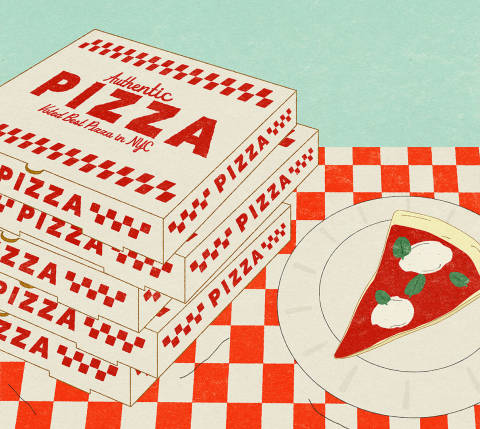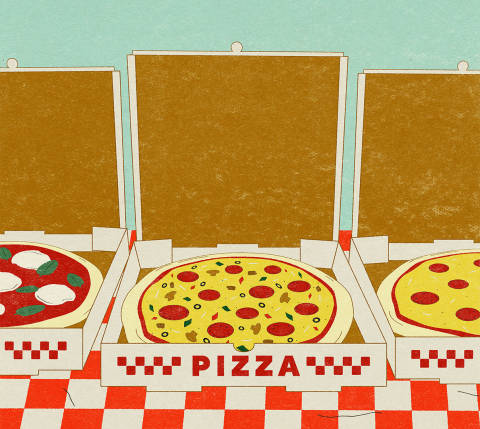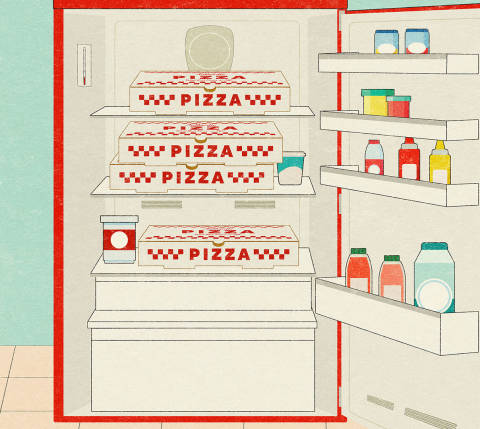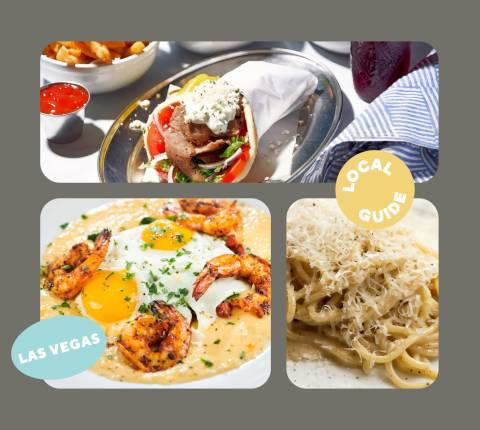*This article includes mentions of merchants or brands who are partners of DoorDash, and DoorDash may receive a commission if you choose to make a purchase from these merchants or brands.
Ordering pizza during basketball’s busiest weeks is serious business. According to a report from The Today Show, pizza delivery spikes 19% during that one particularly infamous spring tournament. In 2022, Domino’s reported that it sold over 3 million pies during the championship games — and that’s just one pizza purveyor out of the thousands available via DoorDash. There’s no question that scarfing down a hot and cheesy slice (or three, or five) is the ideal accompaniment for an evening of watching other people sweat on a court for athletic reasons.
But let us take a moment to honor the art of the act. No, not the act of sinking a ball through a 10-foot-tall hoop while five ginormous dudes try to stop you. I’m talking about the art of ordering pizza. Here are five things to keep in mind.
1. Amount

When it comes to delivery pizza, the first thing to consider is the amount of pizza you’re ordering. How many people are you feeding, and how many pizzas does this require? To answer this question, I present you with “The ⅜ Rule.” I’m not sure exactly who came up with this rule in the first place, but the internet seems pretty unanimously convinced of its authority. Here’s how it works: The average adult human eats about three slices of pizza, and the average large pizza contains eight slices. Thus, to calculate the proper number of pizzas for a group, you multiply the number of eaters by ⅜, and then round up, obviously, because you can’t order 1.87 pizzas. Five people = two large pizzas.
Of course, this rule isn’t hard and fast, and doesn’t account for the kind of appetite an angry basketball fan whose team is about to lose the championship may have worked up. So I like to follow the advice of one particularly pizza-loving friend: Err on the side of caution, and always order an extra pizza, just in case. “Too much pizza is never a problem,” she says.
2. Toppings

As for pizza toppings, stick with the classics, says Kevin Sugarman, Director of Operations Services for the Atlanta-based national pizza chain Mellow Mushroom. At Mellow, the delivery menu is optimized for transit, meaning some of the more operationally complex items are left out in favor of items that travel well, like pizza, wings, and salads. “That helps us reduce errors, reduce missing items, and increase the chances of on-time pickup and delivery for the Dashers,” says Sugarman.
But it’s also about what tastes the best for the longest. “Proteins maintain themselves better than vegetables,” he continues. “As you get more sophisticated or complicated with a specialty type of a pizza, the deterioration is much faster. There's just no debating that, whether it's a swirl of aioli or sour cream or spinach or kale — you’re facing the wilt factor. These kinds of items have a tendency to break down as they sit in the heat and then become room temperature.”
Classic cheese, pepperoni, sausage, and hardier produce, no problem. Sugarman’s go-to? “I've been with Mellow Mushroom for 27 years, and I still eat pepperoni and mushroom pizza twice a week.”
3. Texture
In an ideal world, all pizza would have a crispy crust and ooey-gooey cheese on top. But because delivery pizza has to travel through the big, bad world to get to you, maintaining this balance of textures in transit is a challenge. “To get a crispy, crunchy pizza crust, you need the food to have lost some moisture during cooking, which creates tiny pores,” says Abbey Thiel, aka Abbey the Food Scientist, a popular YouTuber who holds a PhD in Food Science. “When pizza is cooked in the oven, water near the surface of the crust will vaporize and leave behind various small tunnels and pockets. This dehydrated area of the crust leads to a crispy texture.”
Unfortunately, says Thiel, the longer a pizza sits, “the more its moisture will start to redistribute into the dehydrated crust. This is why leftover pizza has a limp, soggy texture. The water is simply trying to reach equilibrium and is drawn back into the once-dehydrated crust since molecules move from high to low concentration. And that’s why, as soon as a pizza pops out of the oven, it will start to lose its crusty crispiness.” (Yes, crusty crispiness is the scientific term.)
Luckily, pizza companies have put some impressive technology in place to prevent this. At Mellow Mushroom, the process of keeping pizza fresh for the consumer begins the moment it comes out of the oven — and continues until it reaches your front door.
“Pizza is the original delivery food,” says Sugarman.“It’s affordable, it feeds the masses, and it travels well — as long as you invest in insulated, sturdy, well-vented pizza boxes.” Mellow Mushroom uses a specialized liner inside every box that helps maintain crust consistency and warmth. This Perfect Crust Pizza Liner, popular among brands that deliver via DoorDash, features raised bumps that allow airflow and prevent the pizza from sitting directly on the cardboard bottom of the box. This enables moisture to escape, absorbs grease, and results in a crispier crust.
4. Temperature
There are two temperature zones to consider when ordering delivery pizza: The first is “optimal deliciousness” temperature, and the second is “is it still safe to eat” temperature.
Let’s start with the first, which begins with the oven. The best way to cook a pizza is fast and hot, so that the crust can get crispy on the outside but stay chewy on the inside. Italian-style brick ovens typically get up to 800°F, with a rapid two-minute cook time. At Mellow Mushroom, where the crust is a bit thicker than a typical Neapolitan- or Roman-style pizza, the stone-fired ovens cook all pizzas at 520°F. Then, as soon as they’re pulled out and boxed, the pizzas go into a temperature-controlled, insulated food-warming cabinet that never drops below 185°F. Here is where they await pickup, but they typically don’t wait long thanks to Mellow’s sophisticated tracking system, which calculates its delivery drivers’ arrival times to ensure a quick hand-off. Insulated pizza bags — standard issue for all drivers delivering with DoorDash — keep pizzas hot in transit as well.
And once delivered to your house? “You've got about a 30- to 45-minute window for the pizza to sit at room temperature until you begin to lose the integrity,” says Sugarman.
“But how long can you leave that baby sitting out at room temperature without, like, getting sick?” I, a notorious grazer, asked Abbey the Food Scientist. “Any type of perishable food, pizza included, should never be left out at room temperature for more than two hours,” Thiel told me. (Whoops.) “Unfortunately, the temperature that most of us keep our houses at falls into what we call the ‘danger zone’ of 40-140°F. Spoilage microorganisms really flourish within this temperature range and can quickly contaminate the food.”
The solution once you’ve hit that two-hour mark? Reheat or wrap up.
5. Afterlife (a.k.a. Leftovers)

Okay, let’s talk afterlife — because in my humble opinion, pizza makes for some of the best leftovers in the game. “By wrapping up leftovers and putting them in the fridge, the cooler temperatures slow the growth of pesky microorganisms,” says Thiel. Hot tip: Don’t just throw the whole pizza box in your fridge — wrap the pizza in tin foil first to keep it fresh.
The USDA’s food safety guidelines say that leftover pizza will last in the fridge up to four days as long as you follow the two-hour rule. When you’re ready to reheat, opt for an oven instead of a microwave to vaporize the water out of the crust, thus de-soggifying your pizza back to its rightful crispy-gooey state. Mellow Mushroom’s optimal reheating instructions, which can be applied to most pizzas: Bake at 340°F for 6-8 minutes.
Or don’t! As long as it’s been properly refrigerated, eating leftover pizza cold is perfectly safe. “In fact, much to my boyfriend’s dismay, I love to eat cold pizza,” says Thiel.
Last option: If you followed my rather maximalist advice to order an entire extra pizza, and thus have ended up with more leftovers than you can consume in a week (can’t relate but okay!) — freeze it. As long as slices are wrapped securely in foil or plastic wrap, or properly sealed in an airtight container, pizza retains its quality in the freezer for up to two months. No harm, no foul.
PHOTO CREDIT: Illustrations by Zachary Ellis






